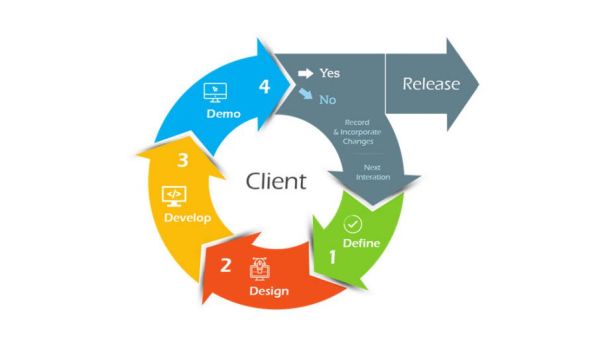Introduction
Software development is a complex and dynamic field that is constantly evolving with new technologies, methodologies, and concepts. However, for those who are new to the industry or unfamiliar with the technical terminology, navigating the world of software development can be daunting. In this blog post, we’ll simplify the tech jargon commonly used in software development, breaking down complex terms into easy-to-understand explanations and examples.
Programming Languages
Programming languages are the foundation of software development, serving as the tools used to write code and create software applications. Some common programming languages include:

- Java: A versatile and widely-used programming language known for its portability and scalability. Java is commonly used for building enterprise-level applications, mobile apps (Android), and web applications.
- Python: A high-level, interpreted language known for its simplicity and readability. Python is popular for web development, data analysis, artificial intelligence, and automation.
- JavaScript: A client-side scripting language used for creating dynamic and interactive web pages. JavaScript is essential for web development and is often used in conjunction with HTML and CSS.
- C#: A programming language developed by Microsoft for building Windows applications, web applications, and games using the Unity game engine.
Frameworks and Libraries
Frameworks and libraries are collections of pre-written code and tools that developers can use to streamline the development process and solve common problems. Some popular frameworks and libraries include:

- React: A JavaScript library for building user interfaces, particularly for single-page applications. React is maintained by Facebook and is known for its component-based architecture and virtual DOM.
- Angular: AA front-end framework for building web applications, developed and maintained by Google. Angular provides a comprehensive toolkit for building robust and scalable applications.
- Django: A high-level Python web framework for building web applications quickly and efficiently. Django follows the model-view-template (MVT) architecture and includes built-in features such as authentication, database ORM, and admin interface.
- Spring: A Java framework for building enterprise-level applications. Spring provides comprehensive support for dependency injection, aspect-oriented programming, and transaction management.
Version Control:
Version control is a system that tracks changes to files and directories over time, allowing developers to collaborate on projects and manage code revisions. The most common version control system is Git, which is widely used for tracking changes to source code and coordinating work among multiple developers. Git repositories are hosted on platforms such as GitHub, GitLab, and Bitbucket, where developers can share, collaborate, and contribute to open-source projects.
Agile Methodology:
Agile is a software development methodology that emphasizes iterative development, collaboration, and flexibility. Agile teams work in short iterations (sprints) to deliver incremental improvements to the software, gathering feedback from stakeholders and adapting to changing requirements. Some common Agile practices include:

- Scrum: A framework for managing complex projects, where work is organized into sprints and managed by a cross-functional team.
- Kanban: A visual management method that focuses on continuous delivery and workflow optimization. Kanban boards are used to visualize work in progress and track tasks from start to finish.
- Lean: A set of principles and practices derived from lean manufacturing, aimed at maximizing value and minimizing waste in the software development process.
DevOps:
DevOps is a cultural and organizational movement that aims to bridge the gap between development and operations teams, enabling faster and more reliable software delivery. DevOps practices emphasize automation, collaboration, and continuous integration/continuous delivery (CI/CD), allowing teams to deliver software updates more frequently and with greater confidence.

Empowering Understanding in Software Development
Navigating the world of software development can feel like trying to decipher a foreign language, with a seemingly endless array of technical terms and acronyms to contend with. However, gaining a basic understanding of common tech jargon can empower individuals to communicate more effectively with developers, make informed decisions, and participate more meaningfully in discussions about software projects.
One such term that frequently crops up in software development is “API,” which stands for Application Programming Interface. Essentially, an API is a set of rules and protocols that allows different software applications to communicate and interact with each other. Whether it’s fetching data from a server, sending notifications to users, or integrating third-party services, APIs play a crucial role in enabling seamless interactions between various components of a software system.
Another common term is “agile,” which refers to a methodology for software development that emphasizes iterative development, collaboration, and flexibility. Agile teams work in short, incremental cycles called sprints, where they focus on delivering small, tangible improvements to the software with each iteration. This approach enables teams to adapt to changing requirements, gather feedback from stakeholders, and deliver value to users more quickly and efficiently.
Conclusion
Navigating the world of software development can be challenging, especially for those who are unfamiliar with the technical terminology and jargon. However, by understanding common terms and concepts in software development, you can gain a clearer understanding of the tools, practices, and methodologies used in the industry. Whether you’re a beginner looking to learn the basics or an experienced developer seeking to expand your knowledge, simplifying tech jargon can help demystify the complexities of software development and empower you to become a more effective and informed practitioner.
Related Posts





